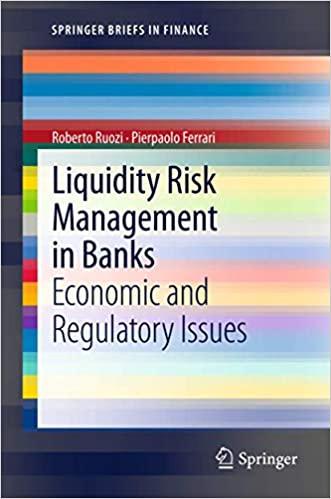Question
Problem Set We have now covered the basic properties of options. To conclude, here are some exercises to practice what you have just read. For
Problem Set We have now covered the basic properties of options. To conclude, here are some exercises to practice what you have just read. For the problems below refer to the following set of information. As of July 26, the following European options, which expire on August 20, were written on XYZ Corporation. Their prices are shown in Table C. Table C Exercise Price Calls Puts $35 $4 1/8 $1 3/16 $40 $1 5/16 Not traded $45 $3/8 Not traded Source: Casewriters. XYZ pays no cash dividends to its shareholders. A Treasury bill maturing on August 20 that pays $35 at maturity costs $34.94 on July 26. Problem 1 Could an American call option on a stock ever be worth less than a European call? How does an increase in time to maturity affect the value of European calls? American calls?
Problem 2 Suppose the stock on a company is at $150, and the company pays no dividends. Your friend has an American option on the stock with an exercise price of $100, but it is still a few months to expiration. He has decided to lock in his profit and exercise the option. Can you think of a way of arbitraging this situation?
Problem 3 Suppose that XYZs stock price on July 26 was $50. On that date, what is the very least a $35 call could be worth? The most? What trade would you do if the call was $15? Problem 4 What price would you expect the $45 put on XYZ above to trade at if the stock were at $37.50? If it traded above this price, what arbitrage opportunity would exist? Problem 5 Suppose a stock, which pays no dividends, sells for $10 today. Next period, it will either move to $7 or $14. You do not know the probabilities of these two outcomes. Riskless zerocoupon bonds, paying $1.10 in one period, cost $1.00 today.
1. What price would an at-the-money call sell for today?
2. If you wished to synthetically manufacture the at-the-money call option, how many bonds would you buy? How many shares of stock?
3. If the call sold for $3.00, how would you capture arbitrage profits?
4. Now, consider what the stock might do in the second period. If it moves to $14 in the first period, it can either move up to $18 or down to $11 in the second period. If it moves to $7 in the first period, it can either move up to $11 or down to $4 in the second period. Assuming that riskless zero-coupon bonds, paying $1.10 in the second period, cost $1.00 at the end of the first period, what price would an at-the-money call sell for today?
Step by Step Solution
There are 3 Steps involved in it
Step: 1

Get Instant Access to Expert-Tailored Solutions
See step-by-step solutions with expert insights and AI powered tools for academic success
Step: 2

Step: 3

Ace Your Homework with AI
Get the answers you need in no time with our AI-driven, step-by-step assistance
Get Started


